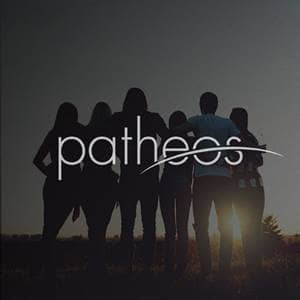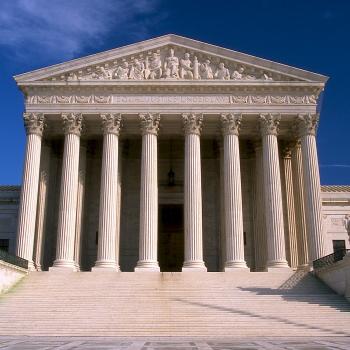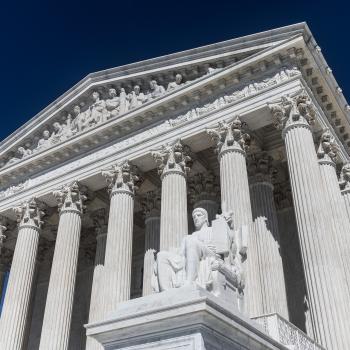Forbid Them Not, pp. 71-88, chapter 7
This chapter, which takes place on April 29th, covers the first hearing in the case. Despite his penchant for excess exposition, Farris does little to explain what this hearing is for, exactly.
I know many of you found the hearings boring in the last Farris novel I reviewed, so I’m going to try to cover this chapter while inducing as little boredom as possible.
The first question that must be answered is this: should the media be allowed in the courtroom? While the only juvenile courtrooms I’ve ever been in have been small—with only a row or two of seating in the back—Judge Holman’s courtroom is large enough to seat 100 “in the spectator rows.” As best I can tell, Judge Holman is not specifically a juvenile court judge; he appears to hear all sorts of cases, some of which would presumably fill the room.
Judge Holman says that he has never allowed the media into a juvenile court hearing in the past, but that he recognizes that this case is different. He asks Cooper and Randolph if they have a preference.
But first he has those already in the room introduce themselves.
Cooper, seated at the table to the judge’s right, stood first. “Cooper Stone of Jameson and Stone appearing for the parents, Your Honor.”
“I assume that the fine looking couples seated with you are the …” the judge began. He fumbled through some papers for a moment and then continued, “are the Thomases and the Garvises.”
“That’s right, Judge,” Cooper replied. “The Thomases are closest to me, and the Garvises are to their right.”
And more of that.
After the introductions Randolph assumes it’s time to get right into things, but Judge Holman shuts him down.
“Mr. Suskins [i.e. Randolph], why don’t you take your seat for a moment?” the judge interrupted. “I have some preliminary matters to cover that may change the order of things that you had in mind for this hearing in my courtroom.” His tone was pleasant, but Holman stared at Suskins with raised eyebrows and an ever-so-slight-smile that gave a clear message who was in charge.
Judge Holman is ever so ready to put Randolph in his place, because Judge Holman does not like Randolph. Why Because Randolph does not live in Loudoun County.
The first issue, as I’ve mentioned—clearly I got ahead of myself—is the media. Judge Holman asks whether Cooper and Randolph think the trial will bring to light anything that might “embarrass” the children or otherwise harm them.
“No, Your Honor,” Cooper said, turning to look at Layton and Emily.
Is it as odd that they’re here as it feels like to me? I’ve been in juvenile proceedings in child protection cases before; the kids have never been present. Is this a regional thing?
“We know of nothing embarrassing at all that has been alleged. In fact, we don’t even know any wrongdoing or harm that has been alleged, much less that will be proven. The only allegations that exist in this case are that these families have taught their children traditional Christian doctrine, that they have disciplined their children in a manner that has been not only legally accepted for all of our nation’s history, but has been deemed good parenting ever since the Book of Proverbs was written, and that the Thomas family has chosen to teach their son in the same manner as chosen by the first governor of this Commonwealth, Patrick Henry. The only embarrassing thing is that our national government thinks there is something wrong with this kind of parenting.”
All he had to do was say “No, Your Honor.”
Judge Holman, though, thinks Cooper’s little speech was awesome—and says as much.
“Well, Mr. Stone, you have managed to argue your case pretty thoroughly on an introductory manner. I see that your uncle’s proclivities have been passed down to you. Tell him that you did a little better today than he has done in the past few years.”
Is that a dig at his uncle?
What makes all this really weird, though, is that when Randolph tries to follow suit, Judge Holman shuts him down.
“Let me say first, your Honor, that we strongly disagree with Mr. Stone’s characterizations of this case as failing to allege any wrongdoing. We believe that the treaty in question has caused our nation to become committed to what is best for children and any deviation from that standard in fact causes—”
“Mr. Suskins,” Holman interrupted. “You don’t need to argue the merits just because our young Mr. Stone has done so. You and I have been around the block a couple times, it would appear, and so I will just assume that you are a very competent lawyer and that you can give a good substantive answer for little speeches like the one Mr. Stone just gave—although I will say as a speech it wasn’t that bad.”
The deputy buried his mouth in his hand to keep from laughing aloud as he watched from his bailiff’s perch.
Really?
Ultimately, Judge Holman gives Randolph the space to state that he thinks other parents would benefit from learning about their new responsibilities under the treaty, and that media access to the trial would help spread this information.
I just realized that I forgot to quote Farris’ description of Randolph when he stood to introduce himself to the court. Let me give you that here:
“Good morning, Your Honor,” the lawyer brushed back some disobedient strands of his brilliant silver hair, which was a bit on the long side. His deep blue suit hung perfectly on his trim physique in a manner that strongly suggested a custom tailor. “If it pleases the court, I am Randolph Suskins of Baxter, Connolly and Suskins, appearing for the petitioners, Children’s Defense Fund and the National Education Association.”
Farris’ penchant for this kind of writing is at least partly explained in his description of the buzz as the media entered the court, finally granted entrance by Judge Holman:
The print journalist got quickly busy scribbling phrases like “brown hardwood benches grooved with the marks of more than a century of justice-seekers,” “arched colonial windows rising for two full stories,” and other descriptions of the courtroom to give their articles that extra verbal edge.
To be sure, certain writing forms do include such flowery language. I’m fairly certain, however, that courtroom reporting is not usually one of them. At least—not on this level, anyway. This isn’t the Supreme Court.
It’s worth noting that the children’s guardian ad litem, a Rachel Hennessey, objected to allowing the media on the grounds that details of the children’s spanking might be embarrassing to the children if their friends or classmates were to hear them repeated in the news. Judge Holman chose to allow the media access anyway, merely barred them from interviewing the children or reporting any especially sensitive details.
Rachel, by the way, is introduced as a “young redhead” who is five feet three inches tall. Her suit is not described. It is presumably not as splendid as Randolph’s.
Before the hearing can turn to more substantive issues, Judge Holman once again scolds Randolph.
“Mr. Suskins, let me speak with you for a second.”
A bit bewildered, Suskins rose, flicking back the longish strands of silver hair that continually bedeviled his forehead. “Yes, Your Honor,” he replied, as if he had fully anticipated this exchange.
“Mr. Suskins,” Holman said, holding up a three-inch stack of legal papers, “when did you file this document that is euphemistically called a brief?”
“I believe we filed them on the day indicated by the local rules, Your Honor. That would have been earlier this week.”
“Mr. Suskins, the local rules of this juvenile court indicate a deadline for filing,” Holman said, rocking back while lacing his fingers together and placing his hands behind his head. “There is no rule that prohibits you form filing these papers at the last possible minute. However, there is a bit of difference between your submission and the typical brief we get in this court in a juvenile case. …
“Now, Mr. Stone has responded in record time with his brief. I am not about to try to digest three inches of text from you and an inch and a half from Mr. Stone in the time that your late filing necessitates. I am simply not prepared to take testimony, nor am I prepared to make any ruling today because I need more time to digest these briefs. And if you ever, and I mean ever, make another last minute filing of this magnitude in this case or any other, I will hold you in contempt of court!”
Judge Suskins says that he is changing the rules henceforth so that briefs of more than seven pages must be submitted ten days before the regular filing deadline. With a few more choice words, he finishes.
In other words, this hearing is going to be about procedural issues only. And thank goodness, because I’m already exhausted! The procedural issue that Judge Holman wants answered is, how do the Children’s Defense Fund and the National Education Association have standing to bring this lawsuit to begin with?
Last week, several individuals asked exactly who is paying Randolph, the wealthy-ass lawyer, to argue this case. The answer is the Children’s Defense Fund and the National Education Association. At the UN Committee on the Rights of the Child meeting we saw earlier in this book, it was decide that these two agencies, and not the relevant government agency, the National Commission on Children, should bring the lawsuit. This was to give the Commission some distance from the case, and thus from criticism of the case. We never got to see Nora or Jody go to either the CDF or the NEA, however, so we don’t know how they convinced these organizations to hop on board with this case.
Randolph points Judge Holman to “tab A in the appendix to our brief,” which contains a provision from “Article 45, on page 21 of the appendix” of the UN Convention on the Rights of the Child.
“As you can see from this section, NGOs—that is non-governmental organizations that have been officially sanctioned by the United Nations—are given the authority to assist the UN in the implementation fo this treaty.”
Farris does not offer the text of Article 45 for the reader. That may not be all that surprising, considering that this is what that text actually states (it is section a that is of interest):
Article 45
In order to foster the effective implementation of the Convention and to encourage international co-operation in the field covered by the Convention:
(a) The specialized agencies, the United Nations Children’s Fund, and other United Nations organs shall be entitled to be represented at the consideration of the implementation of such provisions of the present Convention as fall within the scope of their mandate. The Committee may invite the specialized agencies, the United Nations Children’s Fund and other competent bodies as it may consider appropriate to provide expert advice on the implementation of the Convention in areas falling within the scope of their respective mandates. The Committee may invite the specialized agencies, the United Nations Children’s Fund, and other United Nations organs to submit reports on the implementation of the Convention in areas falling within the scope of their activities;
(b) The Committee shall transmit, as it may consider appropriate, to the specialized agencies, the United Nations Children’s Fund and other competent bodies, any reports from States Parties that contain a request, or indicate a need, for technical advice or assistance, along with the Committee’s observations and suggestions, if any, on these requests or indications;
(c) The Committee may recommend to the General Assembly to request the Secretary-General to undertake on its behalf studies on specific issues relating to the rights of the child;
(d) The Committee may make suggestions and general recommendations based on information received pursuant to articles 44 and 45 of the present Convention. Such suggestions and general recommendations shall be transmitted to any State Party concerned and reported to the General Assembly, together with comments, if any, from States Parties.
In sum, article 45 states that relevant NGOs should (a) have a representative present at the consideration of the implementation of provisions of the Convention that fall within their scope; (b) offer expert advice on the implementation of the Convention in areas within their scope; and (c) submit reports on the implementation of the Convention on areas that fall within their scope.
Nothing here sounds like it gives NGOs the authority to bring lawsuits. It sounds like it’s targeted, say, at NGOs providing medical care to children, or supporting children’s ability to stay in school, or educating new mothers on breastfeeding and infant care. In effect, article 45 simply states that interested parties that play a role in fulfilling the rights and responsibilities of the Convention should be involved in official efforts to meet those responsibilities.
And yet, Holman doesn’t blink. He fully accepts this. He asks for documentation that the CDF and the NEA are “UN-sanctioned NGOs” and is provided this information. He is satisfied—sort of.
“I don’t mind telling you, Mr. Suskins,” he said, “that your whole theory troubles me. I am not saying that I am going to find against you on this or any point, but it troubles me deeply that the treaty seems to give this kind of authority to private organizations.”
It … doesn’t. It doesn’t seem to do that at all.
Judge Holman next asks Randolph to explain “very briefly how these families have violated their children’s rights under this UN treaty.” Randolph explains, arguing that spanking “is unquestionably banned by Article 19 of the Convention” and that “Taking a child out of official government-mandated education programs can be done but not only the child’s rights and wishes have been appropriately reviewed”—by the Commission, state social services departments, public schools, or an NGO—“to see if such decisions are in the best interests of the child.”
Let’s pause for a moment and look at Article 19.
Article 19
1. States Parties shall take all appropriate legislative, administrative, social and educational measures to protect the child from all forms of physical or mental violence, injury or abuse, neglect or negligent treatment, maltreatment or exploitation, including sexual abuse, while in the care of parent(s), legal guardian(s) or any other person who has the care of the child.
2. Such protective measures should, as appropriate, include effective procedures for the establishment of social programmes to provide necessary support for the child and for those who have the care of the child, as well as for other forms of prevention and for identification, reporting, referral, investigation, treatment and follow-up of instances of child maltreatment described heretofore, and, as appropriate, for judicial involvement.
Unless Farris agrees that spanking is “physical or mental violence, injury or abuse, neglect or negligent treatment, maltreatment or exploitation,” he ought to be out there arguing that the Convention does not ban spanking. But he does not do that. And there would seem to be some precedent for this argument—all but one country has ratified the Convention, but less than a third of these countries have banned spanking.
Also, the article says that states party to the treaty will “take all appropriate legislative, administrative, social and educational measures” to protect children from these various forms of violence—it seems to suggest that the U.S. would need to actually ban spanking, and gives no opening for legal cases (there is nothing about “judicial measures”) absent actions of the legislature or administrative actions (which might possibly include an executive order).
Perhaps unsurprisingly, Randolph does not cite a specific article of the treaty when addressing the fourth allegation—Randolph argues that teaching children that Christianity is the only true religion violates the treaty by teaching hatred of other religions and denying them “their right to develop the kind of tolerance that is essential if we are going to live in peace throughout the world.” Judge Holman is highly troubled by the idea that his courtroom would hear a case on what is taught in Sunday school, and he says as much—while assuring Randolph that he will honor the law, of course.
Judge Holman announces that the hearing will reconvene in 30 days, and that in the meantime each side may “take up to four depositions of not more than a half-day each”—meaning, they can call witnesses and ask questions of them, while they are sworn in—and that he will read through each side’s brief in the meantime.
And that’s the end of the hearing. So much of this is repetitive—even Randolph’s discussion of how the families have violated the treaty—that I think it would have been extremely easy to cut this book down to half it’s length.
At least our chapter next week won’t cover a hearing!
I have a Patreon! Please support my writing!















